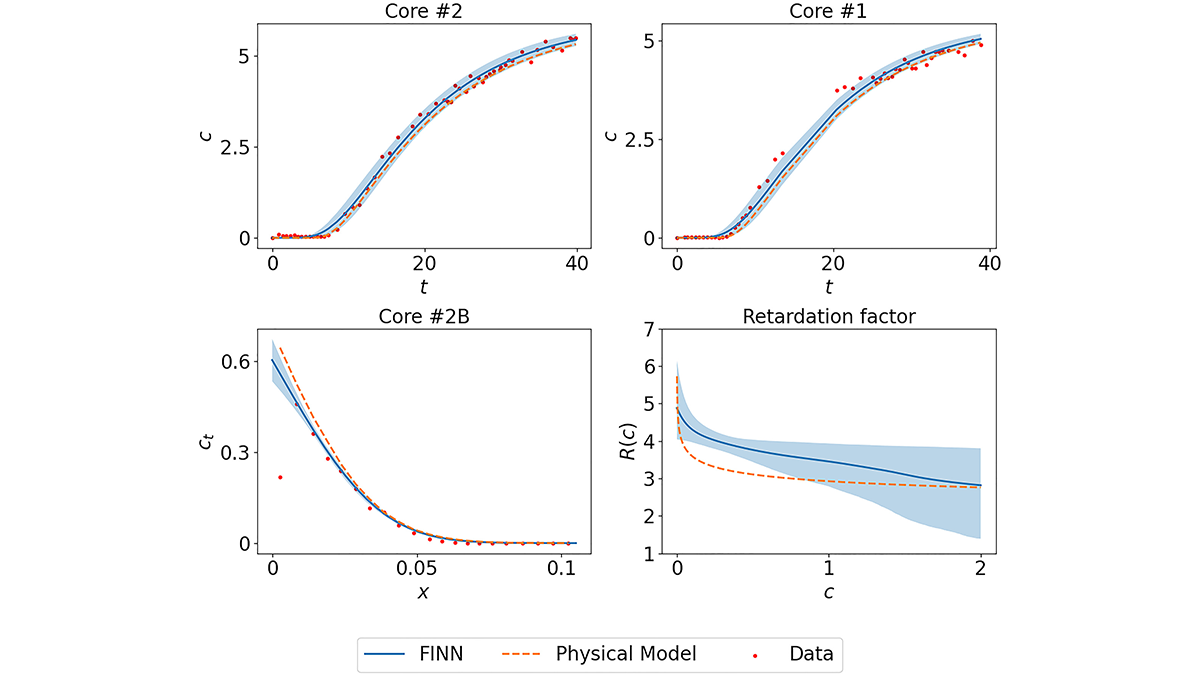Editors’ Highlights are summaries of recent papers by AGU’s journal editors.
Source: Water Resources Research
Machine learning (ML) approaches are highly useful in leveraging observation data to discover new insights about a natural system. However, they require a significant amount of data, which are often expensive and difficult to acquire.
When data availability is sparse, the finite volume neural network (FINN) model proposed by Praditia et al. [2022] offers a better solution to effectively exploit and learn from the data. FINN demonstrates the ability of ML models to represent physical processes as expressed in partial differential equations (PDEs). The approach also shows a significant potential for generalization to various conditions and for incorporating uncertainty quantification. Additionally, FINN performs exceedingly well compared to other ML approaches, and it is able to quantify the uncertainty of “missing pieces” in the differential equation models that were learned by FINN.
Citation: Praditia, T., Karlbauer, M., Otte, S., Oladyshkin, S., Butz, M. V., & Nowak, W. (2022). Learning groundwater contaminant diffusion-sorption processes with a finite volume neural network. Water Resources Research, 58, e2022WR033149. https://doi.org/10.1029/2022WR033149
—Xavier Sanchez-Vila, Editor, Water Resources Research

